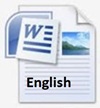Author Guidelines
The manuscript shall be written in the following rules:
The manuscript submitted to PMAR shall never been published elsewhere. Any manuscripts being processed by PMAR should never be sent to other journal or media until there is notification from PMAR secretariat.
- The Public Management Accounting Review (PMAR) is published in English only (British English and American English) consistently throughout the text, and please be sure to write clearly and use correct punctuation; we recommend that non-native authors have their contributions proofread.
- The article shall comprise of an abstract of 150-250 words. Please add three to five keywords. Please provide short biographical notes on the authors after peer review process.
- The article shall be sent in the text as a plain Word file and use a standard font (Arial, single-spaced, 10 pt.). Organise titles and subtitles using a clear hierarchy; please do not use more than three levels of headlines. Include footnotes for digression or further argumentation sparingly. Avoid the use of bullet points or numerated explanations.
- The articles shall be submitted via submission in Microsoft Word format (.Doc or .Docx) or Rich Text Format (.Rtf).
- The author’s name shall include no academic degrees. If the article has more than one author, the primary author must be on top of the others. If the team wrote the article, the author's name must be ordered according to the author's team. In the case of a script written by more than one author, Public Management Accounting Review (PMAR) editors will only correspond to the main author or author listed in the first place.
- References should follow APA Reference with the Harvard Citation Style. Please download here
- The new template (2024) for an article can be downloaded here
-
Structure of the manuscripts
Title. The title should be brief, short, clear, and informative which reflects the article content. The length of the title maximum of 15 words. Each word of the title should be started with a capitalized letter.
Authors names and institutions. The authors names should be accompanied by the authors institutions and email addresses, without any academic titles and/or job titles. International collaboration is highly encouraged.
Abstract. The abstract should be a total of about 150-250 words. The abstract should be a single paragraph and should follow the style of structured abstracts. The abstract with no references cited. Also, non-standard or uncommon abbreviations should be avoided. The abstract must contain (a) a clear statement of the originality of the research; (b) the research objective; (c) the method: describe briefly the main methods or treatments applied; (d) the empirical result, summarize the article's main findings; and (e) practical implications.
Keywords. Immediately after the abstract, provide six (6) keywords (phrases). The keywords are the key concept of the manuscript, which will be used for indexing purposes. Authors also must add the JEL Classification
Introduction. The introduction should briefly place the study in a broad context and highlight its importance. It should define the purpose of the work and its significance, including specific hypotheses being tested. The current state of the research field should be reviewed carefully, and key publications cited. An introduction describes a brief background of the research, the research gap, the state of the arts, and the objective (s) and contributions. It should be written efficiently and supported by references. It should be written without numbers and/or pointers.
Literature Reviews. This section summarizes and critically analyzes existing research related to the topic, highlighting key findings, gaps in knowledge, and how the current study contributes to the existing body of work within the field. This section also explains the development of the hypotheses (if any), the grand theory, and previous research on developing hypotheses. The source article should be up dated (no more than 5 years ago), except for legendary articles.Methods. This section describes the analysis tools, the data, and their sources. They should be described in detail sufficiently to allow others to replicate and build on published results. New methods and protocols should be described in detail while well-established methods can be briefly described and appropriately cited.
Result and Discussion. This section explains the results of the study. Data should be presented in Tables or Figures when feasible. There should be no duplication of data in Tables and Figures. The discussion should be consistent and should interpret the results clearly and concisely, and their significance, supported with suitable literature. The discussion should show relevance between the result and the field of investigation and/or hypotheses.
Conclusions. This section concludes and provides contributions for theory, practice, and policy implications, if any, of the study.
References. Double-check that references are in the correct format. Only those papers that are being referenced are to be included in the references section. Sources not being referenced in the text must be omitted. This section lists only the papers, books, or other types of publications referred to in the manuscript. References should be the last 10-year publication with a minimum of 80% of the journal (especially from international recognized journals). References should be listed alphabetically by the author(s) last name(s) and the year of publication. This journal uses APA style 7th edition. We strongly suggested authors to use reference management software like Mendeley, Zotero, etc., to prepare citations and the list of references.
Citation in text. Please ensure that every reference cited in the text is also present in the reference list (and vice versa).














